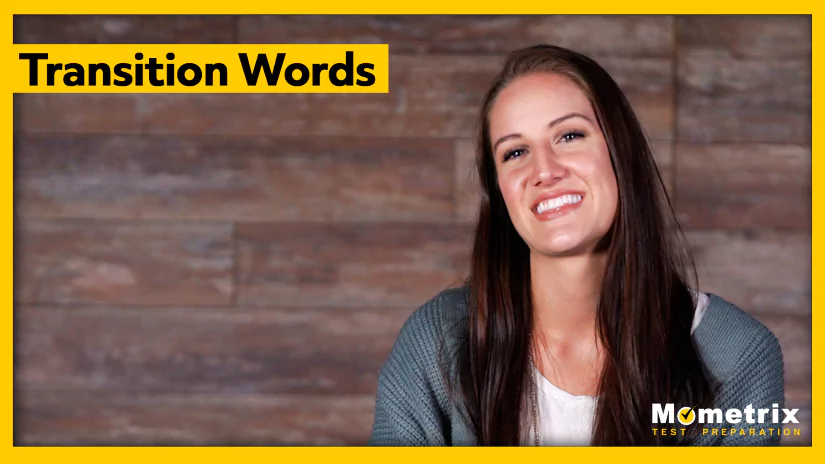
Hi, and welcome to this video on transitional words! I’m going to explain what they are and how to use them.
Transitional words signal how what you’re going to talk about is connected to what you just talked about.
There are a handful of categories of transitional words. These include additive, adversarial, causal, and sequential. You don’t need to memorize these categories, but they can be a helpful framework for thinking about how to transition between sentences. Keep in mind that these categories may differ depending on whose teaching or what test you take.
Additive Transitions
Additive transitions add on to what you’re already talking about or introduce a related concept. They include the basic and as well as besides, not to mention, indeed, moreover, etc. You would use a connection like this to signal to your reader that what you’re about to say builds on to what you just said.
For example:
The overarching idea here is that this is a fantastic laptop. Being the fastest is great, and having a good screen adds on to that.
Adversarial Transitions
Adversarial transitions contrast two things. These include but, in contrast, even though, in any case, and rather.
For example:
I love mint chocolate chip ice cream. On the other hand, I also enjoy coffee ice cream.
In both of these, you’re forced to make a decision, in contrast to our laptop example earlier. You can have an affordable car that’s slow (with the assumption that a faster car would be more expensive), and you can’t have both flavors of ice cream.
Casual Transitions
Causal transitions indicate a cause-and-effect relationship between two sentences or paragraphs. These two segments will build on each other. These include in view of, inasmuch as, on the condition that, consequently, for the purpose of, under those circumstances, and more.
For example:
The Rebels made a final trench run, in the hope that they would be able to blow up the spaceship.
Why did the king close the gates early? He was afraid of the marauders. Why did the rebels make another trench run? Because the first hit only scratched the surface and they weren’t done yet.
Sequential Transitions
Sequential transitions are used to indicate a progression of events. This could be a numerical list such as “first, second, third,” or subsequently, previously, initially, and so on.
For example:
The car chase eventually ended when the suspect ran out of gas.
Initially, the doctors thought the tumor was benign.
In these, things are happening in a certain order. The beginning of a TV show oftentimes includes a review of the past important events that the viewer should remember so that the current episode makes sense.
In the second example, the transitional word comes at the beginning of the first sentence, and before you know what happens. It’s effective in this location because it tells you to expect more than one event.
I hope this video over transitional words was helpful for you!

